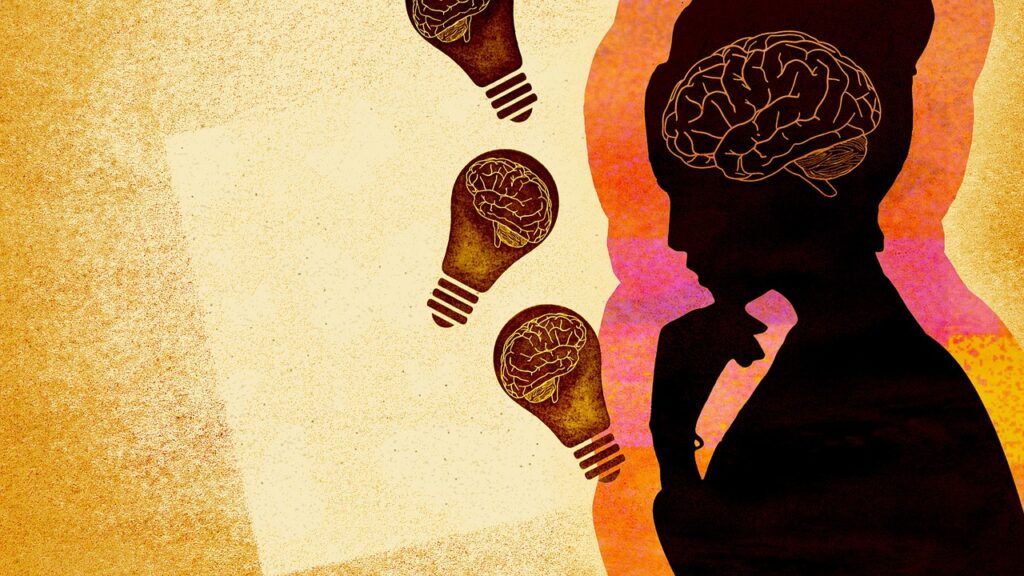You must be curious after learning about the existence of the Primal and Modern brain and might want to know more about it. Congratulations you are in the right place. This article is written in a way that allows you to implement the learning in your life instantly.
Many external resources have also been provided in case you want to learn more!
Primal Brain
The primal brain, often called the reptilian brain or brainstem, encompasses the oldest parts of our brain. This includes the following:
- Brainstem: Controls basic life functions such as breathing, heart rate, and reflexes.
- Limbic System: Manages emotions, survival instincts, and social behaviors. It includes structures like the amygdala, which is key in processing fear and pleasure.
Key Characteristics:
- Instinctive Responses: The primal brain is responsible for immediate, automatic reactions essential for survival, such as the fight-or-flight response.
- Emotional Reactions: It drives basic emotional responses and can trigger strong feelings like fear, anger, and pleasure.
- Immediate Gratification: The primal brain seeks quick rewards and avoids discomfort, often prioritizing short-term benefits over long-term gains.
Primal Brain is in charge of the 5Fs-
- Flee
- Fight
- Freez
- Feed
- Reproduction ( we will not use that last f*** word here!)
Modern Brain
The modern brain primarily refers to the prefrontal cortex, which is located at the front of the brain and is associated with higher-order cognitive functions. Key aspects of the modern brain include:
- Prefrontal Cortex: Responsible for complex thinking, planning, decision-making, and moderating social behavior.
- Neocortex: Involved in advanced functions such as language, abstract thought, and problem-solving.
Key Characteristics:
- Critical Thinking: The modern brain allows us to evaluate information, plan for the future, and make decisions based on logic and reasoning.
- Emotional Regulation: It helps manage and regulate emotions, leading to more thoughtful responses than impulsive reactions.
- Delayed Gratification: The modern brain supports the ability to delay immediate rewards in favor of more significant, long-term benefits.
Primal vs Modern Brains
- Decision-Making:
- Primal Brain: Drives impulsive decisions based on immediate needs and survival instincts. For example, it might compel you to make quick, emotional purchases or react defensively in stressful situations.
- Modern Brain: Allows for thoughtful decision-making by considering long-term consequences and evaluating multiple options. It helps in planning for future goals and making strategic choices.
- Stress Responses:
- Primal Brain: Activates the fight-or-flight response in reaction to perceived threats, leading to stress and anxiety. This is useful in immediate danger but can be detrimental when triggered by everyday stressors.
- Modern Brain: Offers tools to manage and mitigate stress through techniques like mindfulness, cognitive restructuring, and problem-solving. It helps regulate stress responses and promotes resilience.
- Emotional Regulation:
- Primal Brain: Often leads to strong, raw emotional reactions driven by immediate situations, such as anger during a confrontation or fear in unfamiliar circumstances.
- Modern Brain: Facilitates emotional regulation by allowing us to process and reflect on emotions. Techniques like emotional intelligence and self-awareness help in responding thoughtfully and maintaining balanced relationships.
- Social Interactions:
- Primal Brain: Influences basic social behaviors like forming groups for safety and avoiding conflicts. It can drive both positive social connections and aggressive responses.
- Modern Brain: Enhances complex social interactions through empathy, perspective-taking, and effective communication. It supports building meaningful relationships and resolving conflicts constructively.
Practical Insights for Modern Living
- Enhancing Decision-Making:
- Strategy: When making significant decisions, engage your prefrontal cortex by taking time to reflect, gather information, and consider long-term outcomes. Avoid making hasty choices driven solely by primal instincts.
- Managing Stress:
- Strategy: Implement stress management techniques such as mindfulness, exercise, and time management to counteract the primal brain’s stress responses. Develop a proactive approach to dealing with stressors rather than relying on reactive measures.
- Improving Emotional Regulation:
- Strategy: Practice emotional intelligence by recognizing and labeling your emotions. Use cognitive techniques to challenge automatic negative thoughts and foster a balanced emotional state.
- Fostering Positive Social Interactions:
- Strategy: Build strong relationships through active listening, empathy, and effective communication. Understand and manage primal impulses in social situations to enhance interactions and resolve conflicts more effectively.
- Cultivating Long-Term Goals:
- Strategy: Set clear, achievable goals and create a structured plan to reach them. Focus on delayed gratification by breaking down goals into smaller, manageable steps and celebrating progress along the way.
Conclusion
In today’s fast-paced world, it’s easy to get swept up by instinctive reactions from your primal brain. But remember, you have a secret weapon at your disposal: your modern brain. While your primal brain keeps you on alert and reacts quickly to immediate threats, your modern brain—the prefrontal cortex—gives you the power to think critically, manage emotions, and plan for your future.
Next time you find yourself facing a tough decision or feeling overwhelmed, take a moment to harness the full potential of your modern brain. Pause, breathe, and use your reasoning skills to guide your choices. By balancing your primal instincts with the thoughtful capabilities of your modern brain, you can transform stress into strategy and impulse into insight.
You’ve got the tools to not just react to life but to actively shape it. Embrace this balance, and turn every challenge into an opportunity for growth. After all, it’s not just about surviving—it’s about thriving and making every moment count.
Thanks For Reading
Hope You Learned Something
References and More Resources
Understanding the Primal Brain and Its Functions:
- The Primal Brain: An Overview
- How the Reptilian Brain Drives Behavior
Exploring the Modern Brain:
- The Prefrontal Cortex: A Key to Higher-Order Thinking
- Understanding the Neocortex and Its Functions
Managing Stress and Emotional Regulation:
- Mindfulness and Stress Management
- Cognitive Behavioral Techniques for Emotional Regulation


